VOL- 6, ISSUE- 3, PUNE RESEARCH TIMES (ISSN 2456-0960) JIF 3.18
6.3 TIMES
Area of Article : ALL
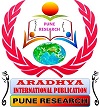
VOL- 6, ISSUE- 3, PUNE RESEARCH TIMES (ISSN 2456-0960) JIF 3.18
6.3 TIMES

VOL- 6, ISSUE- 3, PUNE RESEARCH TIMES (ISSN 2456-0960) JIF 3.18
6.3.1 MANAGEMENT

21st century is known as century of information and technology, which is one of the most important and sophisticated communication platform in the history of human civilization and development which could be traced back to invention of fire and wheel by the early generations of man. Development of Internet and wide usage of the same in India since last 3 decades by common man in our country is constantly increasing. Since 2012 when 4 G service was started in India the number of internet users in India is increasing. With availability of Internet on cellular phone the users have increased a lot both in Urban & too great extend in rural parts of the country. During pandemic of Covid 19 from 23rd March 2020 to 31st of July 2020 when National Lockdown was implemented across the country Pune & PCMC cities in Maharashtra has to follow the lockdown on strict grounds due to the spread of COVID 19. During April & May 2020 there were restrictions on private medical practitioners for some time, they were gradually relaxed but during this period medical practitioners like Doctors, Paramedical staff and pathological sector used internet based social mediums like Youtube, Facebook, Whatsaap on large scale to help people and create awareness among them. This mediums were used in various languages and the use of graphics and Audio-Visual applications were also on large scale. We would like to focus paper on usage of these social mediums by medical professionals in Pune & PCMC areas of Maharashtra
Key Words: Social Media, Medical Professionals, Public Awareness for Covid 19, Graphical & Audio-Visual Presentation of Message
VOL- 6, ISSUE- 3, PUNE RESEARCH TIMES (ISSN 2456-0960) JIF 3.18
6.3.2 TIMES
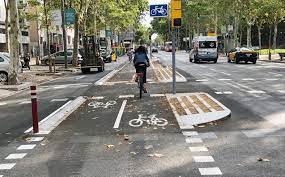
Rapid growth in urbanization increased urban population. The growing
urban population places a significant burden on civic infrastructure and
service like sanitation, water, sewage, housing, electricity and public
transport. Large share of road is used by vehicular traffic which leads to
increase in carbon footprints, road accidents, traffic congestion, pollution,
etc. To overcome all such problems, we need to push ourselves towards clean,
healthier and more efficient mode of transport. The use of bicycle is being
gradually promoted by urban designers and planners. In order to increase the
bicycle share and to provide safer, faster and more direct routes, a bicycle
infrastructure is proposed for urban areas in a city of Aurangabad. The study
identifies the potential of increase in bicycle use and will resolve traffic
problems, reduces emissions and increase accessibility. Integrating cycling
into everyday life provides a promising approach to improve urban streets and
create liveable integrated communities, increase physical activity promotion
and social interaction.
Key Words: Urban Streets, cycle use, bicycle infrastructure.
VOL- 6, ISSUE- 3, PUNE RESEARCH TIMES (ISSN 2456-0960) JIF 3.18
6.3.3 TIMES

Cities
are often seen as indicators of development. The cities, irrespective of the
scale, size, offer possibilities of varied employment and services and as a
result act as focal points for development opportunities. Hence people from
various backgrounds migrate to the cities in search of better opportunities.
This escalating rate of rural to urban migration is the main cause of
population growth in the cities. The growing population generates more demand
for the provision of shelter. Housing is not only a dwelling unit for shelter;
it also includes a set of amenities and facilities like health care, water
supply, sanitation, hygiene, etc. A large number of urban poor find it
particularly difficult to build a shelter on their own due to this multifaceted
nature of the housing market. The public sector plays a key role in the
provision of housing in such scenarios. To tackle the issue of housing, it is
not just adequate to provide housing units in large numbers but should also
address the quality of built environment so as to make the planning relevant to
the user. Such evaluation would help solve the issues faced in the current
housing misfit between the actual needs of the users and the built environment.
This paper intends to understand the relationship between the urban poor needs
and existing public housing in the Aurangabad city context.
Keywords:
Urban Poor, Affordable Housing, Public Mass Housing, Urban Poor needs,
Aurangabad City
VOL- 6, ISSUE- 3, PUNE RESEARCH TIMES (ISSN 2456-0960) JIF 3.18
6.3.4 TIMES
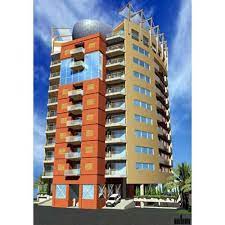
The present’s
study is seismic behavior of various structures using different codal provision
as given Indian code and British code for earthquake analysis. This study is
carried out on residential building of G+10 story Special RC structure. Modeling
of the structure is done as per ETAB software Reinforced concrete frames are
the most commonly adopted buildings construction practices in cities. With
growing economy, urbanization and unavailability of horizontal space increasing
cost of land and need for agricultural land, high-rise sprawling structures
have become highly preferable in cities. With high-rise structures, not only
the building has to take up gravity loads, but as well as lateral forces. Many
important cities fall under high risk seismic zones; hence strengthening of
buildings for lateral forces is a prerequisite. Hence the aim of present study
is to compare seismic performance of G+10 story structures situated in
earthquake zones III. All frames are designed under same gravity loading.
Response spectrum method of analysis used for seismic analysis. Etabs software
is used and the results are compared. A comparative analysis is performed in
terms of base shear, deflection and story drift at linearly static using
response spectrum method.
Key words: ETABS, Earthquake loading,
high-rise, response spectrum method.
VOL- 6, ISSUE- 3, PUNE RESEARCH TIMES (ISSN 2456-0960) JIF 3.18
6.3.5 TIMES
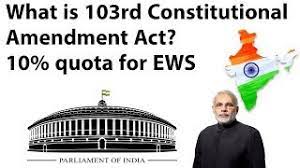
The
walk of all advanced social orders is a walk from status to contract. On this
premise, Western Societies are named as current and Indian culture is yet to
enter this stage in light of the fact that, in Indian Society, the existence of
an individual is as yet represented by the situation with his groups in the
society. The social arrangement of India is chiefly founded on the nearby
culture. Culture is the overall acts of individuals in the lifestyle which
incorporates general traditions and convictions of a specific gathering and
domain. To diminish the imbalance in the society Government of India had found
few ways to lessen divergence like preferential treatment (Reservation).
Reservation policy can give a benefit in admission to an educational institute
or in the jobs of the government institute for special group of people. As of
late passed Economic Reservation Bill can be supposed to be one of the means by
Government to decrease imbalance in the public arena and can likewise be named
as the impact of the past special approaches of the government which were made
to review the affected. The quickly passed economic reservation bill in the
Parliament has caused a significant discussion in the country. Numerous
researchers and activists have expressed resistance to the bill on the ground
that it is anti-constitutional. Shockingly, individuals from unlikely quarters
hopped on the side of this new reservation out of a misinterpretation that the
bill will profit individuals having a place with disadvantaged classes. This
paper is an endeavour to basically analyze the contention for economic
reservation dependent on information and literature.
VOL- 6, ISSUE- 3, PUNE RESEARCH TIMES (ISSN 2456-0960) JIF 3.18
6.3.6 TIMES
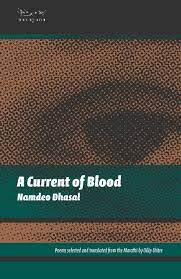
Human
being is supposed to be the social animal, without society he/she can’t survive
life. Even their daily need problems, happiness and whispering cannot have
shared each other. These human values and relations are reflected in an ancient
period. Caste hierarchy and castes, rich and poor these differences were not
existed during the human-evolution period. The historical evidences indicated
that human beings were divided into different groups. These groups were playing
vital role in the social life. The powerful group dominated the weak group,
socially, economically, politically and psychologically, it created
exploitation and injustice of weak groups. The powerful groups started Social,
Economical, Political, Physical and psychological harassment of weak and lower
group. This inhuman life conditions, took place in the lives of lower and weak
group people. This same practice is still going on in Indian social system
between higher caste and lower caste people. A higher caste person is supposed
to be superior and intelligent to lower caste person. This superiority and inferiority complex are going
on in Indian society from years ago. A lower caste person is supposed to be
untouchable for higher caste person. Untouchables are supposed to be sub- human
beings and slave. They were only slaves; they had compulsion to do all the
works of higher people day and night without expecting money or wages. Dr. B.R.
Ambedkar did bloodless social revolution for the untouchables. In Indian
constitution he did legally rules and articles of reservation in an education
and government services to enhance the life standard of Dalit people.
Key
words: Provocative Language, Self-Respect, Deconstruct, Holocausts
VOL- 6, ISSUE- 3, PUNE RESEARCH TIMES (ISSN 2456-0960) JIF 3.18
6.3.7 TIMES

There
is always a thin red line when quality control issues in pharmaceutical world
are discussed world around. From medieval era when Persian philosopher Ibn Sina
penned encyclopedia the cannon of medicine and laid out seven rules for testing
new connotations to Good manufacturing practices making its entry in 1962
amendments in US Food, Drug and Cosmetic Act, 1938, quality inspection of drugs
has become major and delicate issue for administration checking quality of
drugs. At the same time, affordability of drugs is also something that
government has to look into. Constitutional safeguards as well as human rights
puts emphasize on the right to proper treatment and safety of all. Indian
pharmaceutical industry thrived from 1970 onwards due to emphasize of its Patent
Act, 1970 on process patents only. The credit must also go to United States
Hatch Waxman Act, 1984 which opened doors for generic industry to fly high by
making cheap, affordable drugs to American people. But, in the eagerness to make available cheap,
affordable drugs to Americans, the US Food and Drug Administration allowed
inspection by advance notice to drug manufacture companies across the world and
Abbreviated new drug application for first generic applicant Drug Company. These
steps might have misfired as the companies too in their eagerness to earn
monetary profits might have given false data for process validation and have
taken advantage of loopholes in drug laws of America and world across. The fine
balance between quality and profit is something which demands inner morality
and ethical issues. In a capitalistic world, the private pharmaceutical
companies may not have resisted the temptation to make profits by unethical
means like forging false data for process validation and compromising with
quality control. The evolution of patent laws in India and administrative
agencies in United States may have met at the wrong crossroads which might have
been disaster for patient world over.
Keywords: inspection,
generic, abbreviated, administrative
VOL- 6, ISSUE- 3, PUNE RESEARCH TIMES (ISSN 2456-0960) JIF 3.18
6.3.8 TIMES
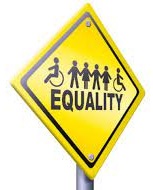
For
disabled people in India, life is a constant struggle -- for education,
employment and access to public places. In the bigger cities, there is a
glimmer of awareness about the need to include the disabled in mainstream
activities. In poor rural areas, however, people with disabilities are among
the most marginalised sections of the population. In addition to the lack of
special services that would allow them to lead independent and fruitful lives,
disabled people in India have to battle cultural prejudices. There is a belief
that in some way people who have a disability are paying in this life for sins
committed in a previous life. Government support for the disabled has been long
in coming and is still inadequate. For a government struggling to provide
basics such as food and water, disability is a low priority.
VOL- 6, ISSUE- 3, PUNE RESEARCH TIMES (ISSN 2456-0960) JIF 3.18
6.3.1

स्त्रियांना सर्वच क्षेत्रात दुय्यम स्थान असते याची प्रचीती प्रस्तुत लेखिकेने मांडली आहे. ग्रामीण स्त्रीचे भावविश्व व आधुनिकता, ‘ग्रामीण स्त्री व स्त्री जगरण’, ‘शहरी व ग्रामीण स्त्री एकच’, ‘स्वातंत्र्यप्राप्तीनंतरचे स्त्रीजीवन’, ‘स्त्रियांबद्दलची समाज धारणा’, ‘स्त्रीची संसार निवृत्ती’, ‘जागृत मातृत्व’, ‘न्यायालयात स्त्री दुय्यम स्थानी’, ‘मंत्रालयातील स्त्रीची स्थिती’, ‘स्त्रीला अंत्येष्ठिचे अधिकार असावेत’ या सर्व लेखांमधून ग्रामीण व शहरी स्त्रीमध्ये विशेष असा फरक जाणवत नाही. यांचे उदाहरणादाखल चित्र रेखाटले आहे. स्त्री-पुरुष यांच्या शरीराच्या ठेवणीत नैसर्गिकरित्या फरक दिसून येतो. त्यामुळे निसर्गाने स्त्रीला संततीची जबाबदारी सोपवून दुबळे केले असे प्रस्तुत लेखिकेला वाटते. पुरुषावर स्त्रीच्या संरक्षणाची व पोषणाची जबाबदारी आहे. आजच्या परिस्थितीत स्त्रीला कुटुंबाची व अर्थार्जनाची अशा दोन्ही जबाबदार्यांमधून जावे लागते. तरीही स्त्री-पुरुष समानता फारच कमी प्रमाणात दिसून येते.